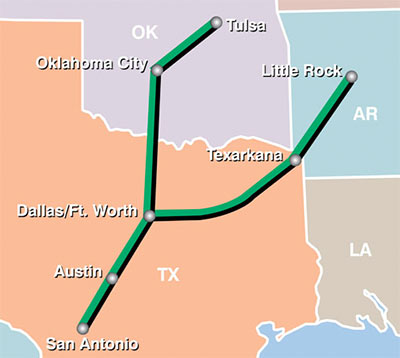
Texas’s Department of Transportation has just announced the kickoff of a 2-year, $14 million study of options for new passenger rail service between the state’s “major metropolitan areas” and Oklahoma City. Funded by a grant from the Federal Railroad Administration, the Federal Highway Administration, the state of Oklahoma, the North Central Texas Council of Governments, and TxDOT itself, the study will compare options for enhancing existing Amtrak routes and building a new high-speed rail backbone through the state, as well as the possibility of public-private partnerships, the agency says. The proposed north-south route would connect San Antonio, Austin, and Dallas to its northern neighbor. (That follows the FRA’s longstanding designation of high-speed rail corridors; the federal agency’s proposed map of the South Central region is shown above.)
But what about, um, that other major metropolitan area nearby?
***
TxDOT’s announcement makes no direct mention of Houston, though it does throw this bone to the southeast: “If built, the Oklahoma City to South Texas line could provide the foundation for a high-speed or higher performance rail system that would eventually connect all the major metropolitan areas in Texas.”
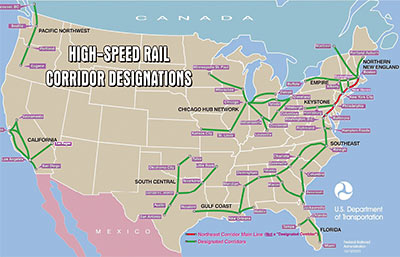
- State Launches Rail Study to See if Passenger Trains from Oklahoma to Texas can Provide Congestion Relief for Drivers [TxDOT]
- Is Texas on track to high-speed rail? [San Antonio Express-News]
- TxDOT to study north-south passenger rail service [Austin Business Journal]
Map of designated high-speed rail corridors: Federal Railroad Administration


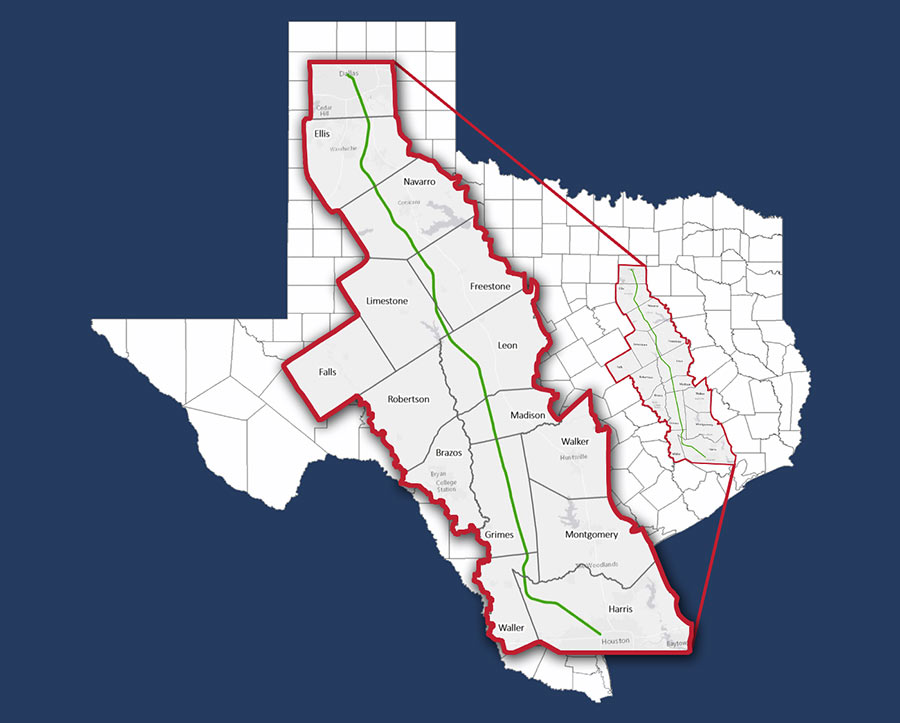
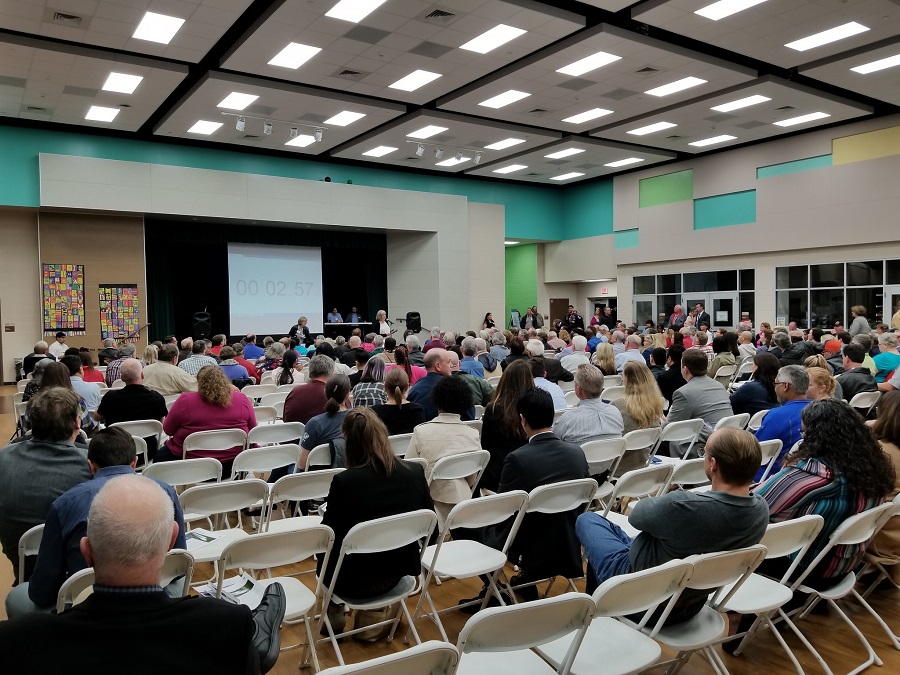
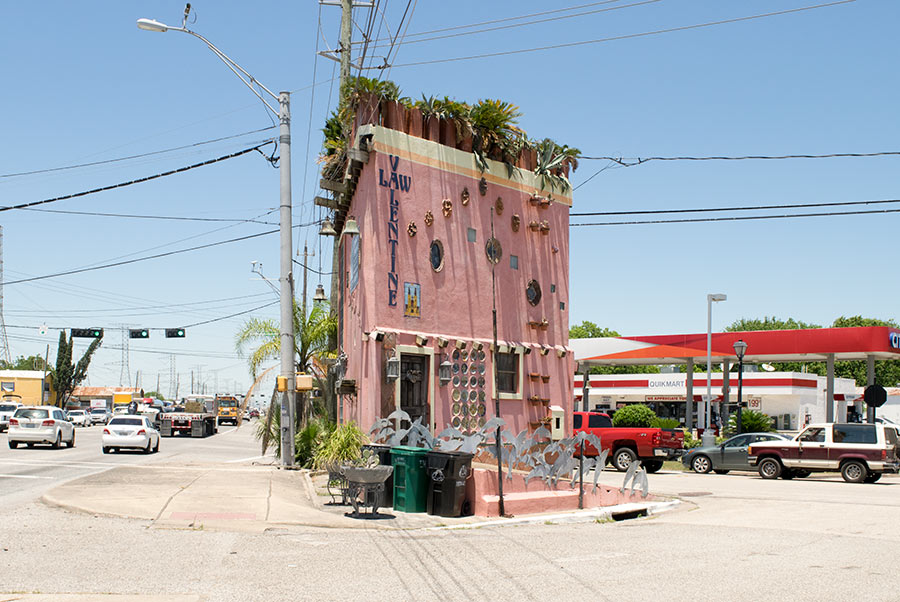
TXDOT is a joke. One of the worst agencies ever. Nothing new here.
Oh here we go again with this Victorian era mode of transport nonsense. Only the state of Commie-fornia is foolish enough to spend money they don’t have (and will not ever have) with a route nobody wants to fulfill a need that’s simply not there. Even in Spain which has the most developed high speed system and heavy public transport use society, it’s still a money losing endeavor.
TxDOT also has ongoing studies for Houston-Dallas (http://www.txdot.gov/inside-txdot/division/rail/high-speed/april-11.html) and Houston-Austin http://ftp.dot.state.tx.us/pub/txdot-info/rail/austin_houston.pdf).
Oh, who cares? I’m not exactly dying to go OKC on a train.
That would be the question: who is dying to go to OKC?
Geez, TXDOT, is 14 million enough to keep the agency in business another year. Yep, SA to OKC is definitley on my itinerary.
Wouldn’t it be cheaper to give everyone in OK and TX a free SW Airlines pass?
More UN Agenda 21. Say good-bye to the roadtrip…
They can have OKC, Texarkana, Little Rock and Tulsa. We’ll take New Orleans! All Day Long….
I guess people from Dallas want to go to OKC. Or vice versa.
It looks like a wishbone, and I think that’s what it is. I suspect Houston will have to pay for high speed on it’s own, just as we have paid for light rail already. …could it be that Houston doesn’t support Rick Perry?
Y’all are nuts. Trains are awesome. Plus this is establishing the main lines and then we can grow from there. Is everyone really dying to hang on to their cars forever? I love to drive as much as the next person, but the thought of hopping on a train and zipping off to another state while I eat, drink, read, sleep, shoot the sh*t with friends/family, whatever sounds great. I’d use it for sure. Then if you could pick-up a ZipCar (or something similar) near the train station, then you can finally drive, or rent a bike, or take public transportation, etc… It could work.
But why go to Texarkana and Little Rock? I kinda get OKC (especially looking at the list of sponsors), but for the cost of the Dallas-Little Rock line I would expect you could get a whole lot more ROI going to Houston instead.
Where’s the TTI? No way a connector is needed between these routes. Traveling frequently, I find that everyone ends up in Houston. Get real, Texas
I hope you guys know that these corridors are federally designated. Why would TxDOT pick these corridors to serve it’s cities. Also, these corridors have been documented for years. Nothing is really new here. Also, if you follow this, as Christof pointed out, TxDOT is going beyond the Federal corridors and is actually studying the Dallas-Houston corridor.
Also, why build rail between Houston in Dallas when more than one airline can provide the same service at more intervals. And if you use these commuter flights, you know you don’t have to get to the airport 2 hrs ahead of time to catch them. You park at the terminal, about 30-45 min before your flight, go through security with your briefcase or backpack in minutes (faster if you pass a background check), then take a 45 min flight.
Also, with businesses paying for most of these flights, these are not really passenger services. These are more like a consolidated corporate jet. It’s carpooling by plane.
That’s a relief. This keeps that Oklahoma riff-raff out of our fair city.
I have to agree that currently available trains are not of much interest to me for inter-city travel in the USA. And this from someone who just had a pleasant ride from Amsterdam to Paris on the Thalys train.
However, it is completely beyond me why they don’t have roll-on / roll-off ferries on land, if they have them on sea.
Drive up to the train station, roll onto the car transport carriage, shoot along at 200mph, roll off at your destination.
I think this would be the best possible way to travel city-to-city up to 800 miles or so.
kjb434-
I hope you know that these corridors are actually internationally designated, via the UN’s Agenda 21 and the ICLEI.
Part of that big “conspiracy”.
Kiss your Freedom good-bye!
http://www.icleiusa.org/
The TXDoT study for the Houston-Dallas corridor is projecting the average speed of traffic along I-45 to be 39 mph in 2035, with 106,475 vehicles per day.
I’m dubious. I think that they have applied some assumptions about urban congestion patterns to a rural interstate highway, ignoring that traffic is more spread out among all the hours of day and night rather than bunched up into uni-directional rush hours.
That’s not to say that 106k vpd would be pleasant. It’d probably be a lot like current holiday traffic volumes, where there’s a fairly solid line of traffic traveling a few mph below the speed limit. Still, I doubt that it would support the argument for high speed rail particularly much.
They are also projecting that the number of trips between Houston and College Station should triple by 2035, to an amount very nearly on-par with the Houston-Dallas pair. Seems like an Aggieland pipe dream to me.
I think that a train linking the major energy centers could make sense. There’s a lot of commuting that goes back and forth along that route. Houston–Dallas–OKC–Tulsa.
Little Rock and San Antonio? I don’t understand that beyond the notion that they’re “federally designated”. That just makes me question federal planning.
Patrick, there is an Amtrak Autotrain. One of its termini is in Orlando, I think the other is in Virginia somewhere.
The tinfoil hat crowd loves rail. It’s either communism or UN Agenda 21. But don’t forget about the Pentaverate?
I’m not a historian, but I don’t believe the Victorian era saw 125-150 mph passenger train service, commonsense. And ignoring the Japanese high speed rail system is convenient. But if our only measure of transportation infrastructure is whether it loses money, let’s not ignore that untolled highways and roads produce less revenue than rail, to the tune of NONE.
Mere 125-150 mph passenger train service SSSSSUUUUUUUUUUUUUUCKS.
If we would bother with the expense of what is proposed, then we should do it one better and go for maglev technology.
Train systems are communism now? Pack your bags everyone, Cold War was won by the communists! Western Europe, Japan, Korea, and all the front lines of the Cold war have all succumbed to “The Karl Marx Transit System of the People”
/joking
looking at the national map, it appears that Houston is linked to New Orleans.
I’m satisfied with not being linked to DFW, OKC, Texarkana, or Tulsa.
Hopefully phase two will link the route from Houston to New Orleans out towards Austin.
That map looks like that, most likely, because that’s the existing Amtrak routes. Dunno if you’ve ever looked at Houston to Dallas by rail, but it takes a mere 20 hours. Why? Because it goes by way of San Antonio. And the first segment runs 3 times a week.
There’s no existing connection directly to Dallas–so it makes little sense to include it in a study of enhancing existing routes. Dunno why only the NOLA-HOU part of the Sunset Limited line is included (since it goes all the way to LA). I think the lines east and west of Houston are differently owned.
Anyway, the funniest part is the geography. Apparently the FRA has no idea where any major city in Texas is, which will sure make it hard to run trains appropriately.
I also hope you guys know that high-speed for these corridors means rarely getting above 100mph.
As we are seeing in California, the cost of building a line with brand new rail is astronomical. For you rail lovers, it makes you silly cost argument with the Katy freeway obsolete (wasn’t really valid to begin with).
Common sense alone would show that the U.S. has very few areas fit for a high speed corridor. Outside of the Boston through D.C. corridor, no other exist. Maybe San Diego to L.A. The problem is scale and people. European rails need to go short distances point to point and they have more people concentrated in those destinations. All add that they had lots of urban growth in the late 1700s and into the 1800s when cars didn’t exist. systems and corridors were built. High speed corridors worked with the existing corridors helping lower costs.
On the flipside, Japan is a version of a modern rail implementation which developed out of necessity from the density of people. You are also seeing this in many other Asian population centers.
Australia and Canada are a good comparisons to the U.S. Any long distance rail service is more for pleasure than commuting and travel. If you want to travel somewhere fast, you get on a plane.
markd,
Thanks for the http://www.infowars.com side of this.
You know that once these trains are built, they’ll make our cars illegal and we will have only a few choices in where we can actually go and we will be watched. We are not your slaves, globalists! We will not ride on your UN-backed new world order trains!!
none of this really matters cause txdot has been “studying” rail lines for decades with no progress. but HSR from houston to dallas would be great. it would instantly generate a higher passenger share than similar airline routes. this has been proven throughout similar cities throughout the world.
+1 Jerry
@ mfastx: In which similar cities throughout the world has HSR proven that HSR between Houston and Dallas would instantly generate a higher passenger share than similar airline routes?
Trains = UN Agenda 21. Communism. Cars made illegal. Slavery.
lol
Am I being trolled? What is going on?
For those who think that the Houston-Dallas corridor would not attract riders, or would best be served by air, look at what happened on the Madrid-Barcelona route. Before the high speed service was opened in 2008, it was the world’s busiest air route, serving almost 5 million passengers a year, with 971 flights a week, usually scheduled at 15 minute intervals. Iberia denoted it the “Air Bridge” service, and it did not require reservations. Since the opening of the AVE line in 2008, trains cover the 386 mile distance in 2.75 hours. Air service takes 1.25 hours. Air traffic has fallen by 54%, and the trains carried 3 million passengers last year. The train fares average $153 each way, compared to $120 each way by plane.
Houston-Dallas is only 245 miles point to point, and is one of the busiest air routes in the US, serving approx. 700K passengers per year in 2011. A HSR link at 250km/hr would cover the distance in 1 hour, 15 minutes, about 15 minutes longer than current air service. There is a case to be made that high speed rail between the 2 cities would be competitive especially given that trains run on electricity that can be produced using $3.50btu natural gas versus airliners requiring jet fuel produced from $95/bbl oil.
Communist ploy or not – if the train has decent leg room and doesn’t charge an extra $50 to bring a suitcase, I’m all for it.
I used to more or less commute to Dallas and I would have been thrilled with a train, as would my many coworkers doing the same thing, all those people I saw on I-45, and all those people queuing up for Southwest flights. I could have actually used that time to do something useful as opposed to driving or being interrupted on a plane trip every 45 minutes to wait in a different line, board, get off, get a car, etc.
I expect it won’t ever happen because Southwest Airlines would have a cow over it.
Rail! Car speed at Airline price! Sounds great.
Ummm…yeah, something is not right about that Madrid-Barcelona analysis.
How do two cities in a relatively poor country, each of them significantly smaller than either Houston or Dallas, start out having the world’s busiest air route? And post-rail, their air passenger volume is still a fair bit higher (3.5m) than the Houston-Dallas air passenger volume (3.0m).
Meanwhile, the Madrid-Barcelona train carries right at about as many passengers as the entire Acela Express route from Washington D.C. to Boston, even though there are about five times the number of people in cities served by the Acela, and even though the trains travel at about the same speed.
I cannot tell why, but clearly the Madrid-Barcelona pair is an outlier where the volume of intercity travel is concerned, and the lessons do not translate well to the United States.
@TheNiche: I didn’t footnote my research, but the Spanish air travel stats are from EU aviation agency, and the US stats are from the June 2012 DOT stats. Train travel stats are in numerous articles a Google search away.
Actually the populations of the cities are very well aligned. Metro Madrid has 6.5 million people, and metro Barcelona is 4.5 million according to Wikipedia. Dallas has about 6 million metro and Houston has around 5.1million. Also, though Spain has a bit lower GDP than the US, it is not “relatively poor”. The Spanish economy is the 14th largest by OECD stats, with a per capita GDP of 32k and only 2.3% below the poverty line.
Before the high speed rail went in, it took 6 hours to travel by rail or drive between cities. By cutting that in half, rail captured market share despite charging higher prices.
Lastly, the Acela never hits more than 140 mph, and only on short stretches. The AVE in Spain travels at 186mph, and in short stretches now hits 205mph.
My only point is that high speed rail could actually attract passengers, and plenty of them, if it were a reality here.
For somebody who seems to know everything, where did you get that Madrid and Barcelona are significantly smaller than Houston and Dallas? Relatively poor I don’t agree but that’s a little less black and white.
That’s funny, I was also citing metropolitan area populations from Wikipedia. Looking them up again, I’m finding that Barcelona is 5,083,000 and Madrid is 6,489,660. The Madrid figure I saw previously was something like 3.5 million, which is about the same as the municipality, so I’m guessing that somebody grabbed it and put it in a table with metro areas. I suppose that I have to partially concede.
However, your population estimates on the Texas cities are also significantly off. DFW is about 6.63 million and Houston is about 6.22 million.
As for GDP, does that include transfer payments from Germany? ;) No seriously, it looks like they slipped to #26 to #30 range right quick, depending on how you measure GDP.
I also grabbed the train and air passenger data from Wikipedia, which was conveniently just about as out-of-date as most other transportation statistics. So everything I’m citing is from around 2008 or 2009-ish. There is a difference between the speed that a technology is designed for and what it actually operates at on average along its route. I’m going to have to eat half a crow on this one too, because I got the Spanish average right, at about 146mph on average, but I tried to compare to the 150mph “operating” speed of the Acela even though the average speed on a more in-depth review is only 70mph. That is a significant error.
Having said all of this, I think that there is still a legitimate question as to what is prompting the extraordinary amount of travel (both air & rail) between Madrid and Barcelona. Obviously it is something that makes that route globally significant in the rankings in a way that Houston-Dallas is not.
Comparing Houston & Dallas to Barcelona & Madrid using population & distance between them as your only metrics is all well and good, but I’d say there are a few more factors to consider.
.
For example, geographical area and population density might be useful, not to mention urban design & walkability.
.
Putting a rail line between two Texas cities that are “designed” exclusively for cars doesn’t make quite as much sense as putting a rail line between two European cities that have exceptional public transportation systems and places (public squares, parks, streets) that you actually want to spend time in.
Once I rode the Amtrak train from Austin to Dallas, accompanied by some Mennonites who had come down to help out after a tornado and a bunch of people who were planning to drink too much to drive to the TX-OU game. It seemed nice and I thought, why don’t business travelers use this? When we pulled into Dallas nine-and-a-half (!) hours later, I had my answer.
In Austin, admittedly, time is perhaps not money in quite the same way it is in Houston, but I think many people here would gladly take the passenger train to Dallas if it had a dedicated track and the trip took only a little less time than a car. 3 hours is the time to beat. I don’t think this requires maglev technology. I know I would be happy never to see the Jersey barriers on I-35 again.
Great just another way Houston is getting left behind!!!! What rich person is stopping this from happening? How stupid does this map look? Stop at Galveston? Stupid. Everyone hates Houston traffic. Why r we not fixing it?
People should not use the word “stupid” twice in a seven-sentence rant, or especially as a single-word sentence. Such weak rhetoric is the pot calling the kettle black.
I like how the DoT logo looks like a hurricane bearing down on Georgia.